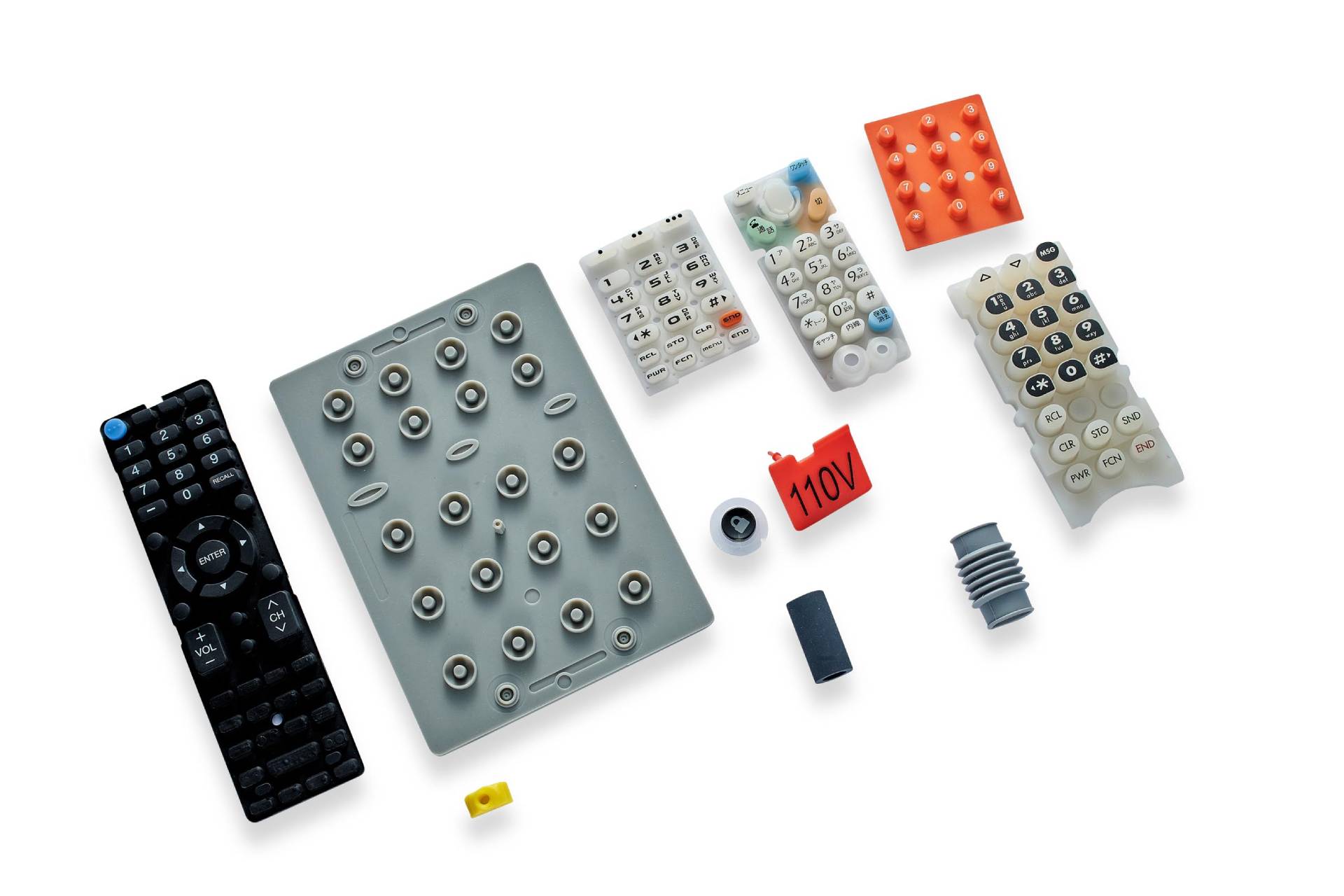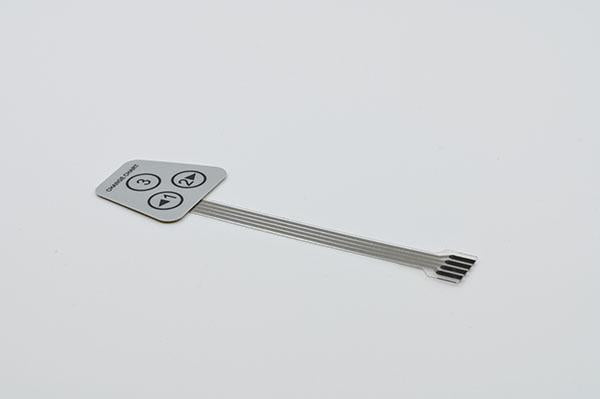Membrane Switch Manufacturer with Rapid Prototyping and Delivery
Comprehending the Importance of Membrane Switch in Modern Electronics and Their Applications
Membrane changes function as a vital element in modern-day electronics, supplying an effective interface for individual interaction. Their lightweight and personalized nature makes them suitable for a series of applications throughout varied markets. Recognizing their vital elements and benefits can supply insights into their growing significance. As innovation proceeds to development, the development of Membrane changes elevates inquiries about their future applications and design innovations. What lies in advance in this dynamic area?

What Are Membrane Switches?
Membrane buttons are essential components in modern electronics, acting as user interfaces that facilitate communication in between tools and customers. These buttons include several layers, consisting of a visuals overlay, a sticky layer, and a circuit layer, every one of which collaborate to create a useful and resilient user interface. The layout enables for a level, inconspicuous service that can be customized concerning size, form, and visual look, making them appropriate for various applications, from customer electronics to medical devices. The responsive feedback given by Membrane switches over improves customer experience, while their resistance to dust and moisture makes them excellent for challenging settings. Membrane buttons can integrate attributes such as backlighting and printed graphics, additionally expanding their functionality. Their versatility and effectiveness make them a preferred selection in industries where dependability and convenience of use are paramount, ultimately adding to the smooth procedure of contemporary digital devices.
Secret Elements of Membrane Changes
While numerous components contribute to the performance of a membrane layer button, three primary layers play significant duties in its layout and operation. The top layer, commonly made from a resilient polymer, functions as the user interface for customer communication, often featuring printed graphics and symbols. Under this is the spacer layer, which maintains the necessary distance between the leading layer and the circuit layer. This spacer layer assurances that the button turns on just when pushed, protecting against unintentional inputs. Ultimately, the circuit layer consists of conductive traces that finish the electrical circuit when the top layer is depressed. These traces can be made from different materials, including copper or silver. Together, these components develop a robust and reliable tool that is compact and versatile, ideal for a large range of digital applications, from family home appliances to medical devices. Understanding these essential components is vital for valuing the general capability of Membrane switches.
Advantages of Making Use Of Membrane Switches

Membrane Switch Manufacturing Refine
Recognizing the Membrane button manufacturing process discloses the elaborate steps associated with producing these vital elements. The procedure commonly begins with the style phase, where specs and designs are produced utilizing specialized software application. Following this, the visuals overlay is published on an adaptable substratum, commonly making use of high-resolution printing strategies to ensure clearness and precision.Next, the adhesive layers are applied, which serve to bond the numerous parts with each other. The circuit layers, made from conductive inks or products, are then printed onto a different substratum. These layers are very carefully lined up and laminated to create a functional switch.After setting up, the buttons go through checking to verify performance and toughness. Quality control procedures are carried out throughout the procedure to recognize and remedy any defects. The finished Membrane switches are packaged and prepared for circulation, prepared to satisfy the demands of modern-day electronic applications.
Applications of Membrane Changes in Various Industries
Membrane switches are significantly used across various sectors, especially in clinical equipment and customer electronics. In the clinical area, they offer reliable control user interfaces for devices that need precise operation. In customer electronic devices, these switches improve customer communication by providing smooth and receptive user interfaces. Receptive Medical Equipment Control
Countless modern clinical tools utilize Membrane buttons for streamlined procedure and boosted customer interaction. These switches offer a reliable, resilient user interface for a selection of applications, consisting of analysis tools, client tracking systems, and medical instruments. Their customizable styles permit particular layouts that can accommodate the one-of-a-kind demands of healthcare professionals, guaranteeing intuitive navigation and effective access to necessary features. Furthermore, Membrane switches are resistant to pollutants, making them appropriate for sterilized atmospheres. The tactile feedback they offer can improve customer self-confidence, lowering the threat of mistakes throughout important medical procedures. On the whole, the assimilation of Membrane switches in medical tools substantially adds to enhanced operational performance and individual security in health care setups.
Customer Electronics Interfaces
In the domain of consumer electronic devices, Membrane buttons play a crucial duty in improving user interfaces throughout a vast array of tools. These buttons are important to items such as remotes, microwaves, and pc gaming consoles, providing a straightforward and effective user interface. Their design allows for a seamless assimilation of graphics and functionality, making it possible for producers to create streamlined, modern visual appeals without jeopardizing use. Membrane switches are additionally recognized for their sturdiness, commonly standing up to substantial usage and direct exposure to numerous environmental conditions. In addition, they can incorporate functions like backlighting and tactile comments, more improving the individual experience. As customer demands for advanced yet instinctive interfaces expand, Membrane changes proceed to be an important part ahead of time electronic device performance.
Style Factors To Consider for Membrane Switches
Designing efficient Membrane changes calls for mindful focus to various elements that influence both capability and customer experience. One vital consideration is the selection of products, as they can influence resilience, tactile responses, and visual allure. Selecting a suitable adhesive is important for guaranteeing long-term adhesion and resistance to environmental factors.In addition, the layout and design of the switch must accommodate customer communication, with switch sizes and spacing optimized for ease why not find out more of use. The incorporation of graphics and my blog labeling should focus on quality and exposure under different lighting conditions.Consideration of electric features, such as actuation pressure and switch sensitivity, will certainly boost the responsiveness of the Membrane switch. Moreover, the layout ought to fit making processes to assure cost-effectiveness and timely production. On the whole, a well-thought-out layout enhances both the capability and the customer experience of Membrane buttons in modern electronic devices.

Future Trends in Membrane Switch Technology
As innovation continues to progress, Membrane switches are positioned to integrate new advancements that will improve their functionality and application in different areas. One considerable fad is the incorporation of versatile and sturdy materials, which will boost the life-span and reliability of these switches. Improved surface area appearances and adjustable graphics are additionally anticipated, enabling even more instinctive customer interfaces.Moreover, the integration of smart technology, such as touch-sensitive surface areas and haptic responses, is anticipated to boost customer interaction, making Membrane switches more responsive and appealing. Furthermore, breakthroughs in published electronic devices will certainly make it possible for a lot more intricate wiring within thinner accounts, better increasing layout possibilities.Sustainability will certainly additionally play an essential duty in future growths, as suppliers explore environment-friendly materials and production processes. Overall, these fads will certainly ensure that Membrane switches remain relevant and indispensable in a progressively digital and interconnected world.
Regularly Asked Inquiries
Exactly How Do Membrane Switches Over Compare to Traditional Mechanical Buttons?
Membrane switches over deal advantages over typical mechanical buttons, including decreased size, lighter weight, and boosted longevity. They commonly supply a sealed surface area, enhancing resistance to dirt and dampness, making them excellent for varied applications.
What Products Are Frequently Used in Membrane Switch Building?

Can Membrane Switches Over Withstand Extreme Environmental Conditions?
Membrane switches can stand up to extreme ecological problems, relying on their style and products. Top notch building and constructions usually Your Domain Name include longevity versus temperature level variations, moisture, and exposure to chemicals, making them suitable for various requiring applications throughout markets.
Exactly How Long Do Membrane Switches Over Normally Last Before Failure?
Membrane changes usually exhibit a lifespan varying from 1 to 10 million actuations, depending upon elements such as use regularity, ecological problems, and producing quality. Normal maintenance can extend their durability and functional reliability considerably.
Are Membrane Switches Adjustable for Particular Applications?
Membrane buttons are undoubtedly customizable for details applications. They can be tailored in size, performance, and layout, permitting producers to fulfill unique individual needs and improve item aesthetic appeals while maintaining functional efficiency and longevity. Membrane switches are essential elements in contemporary electronic devices, serving as individual interfaces that promote interaction in between customers and tools. The responsive responses provided by Membrane changes boosts customer experience, while their resistance to dust and wetness makes them excellent for challenging settings. The unification of graphics and labeling should prioritize clarity and exposure under numerous lighting conditions.Consideration of electrical attributes, such as actuation pressure and button level of sensitivity, will certainly improve the responsiveness of the Membrane button. Improved surface textures and customizable graphics are also expected, enabling for more intuitive user interfaces.Moreover, the integration of smart technology, such as touch-sensitive surfaces and haptic feedback, is expected to improve user communication, making Membrane changes a lot more engaging and responsive. Membrane switches deal advantages over conventional mechanical switches, consisting of reduced dimension, lighter weight, and boosted longevity.